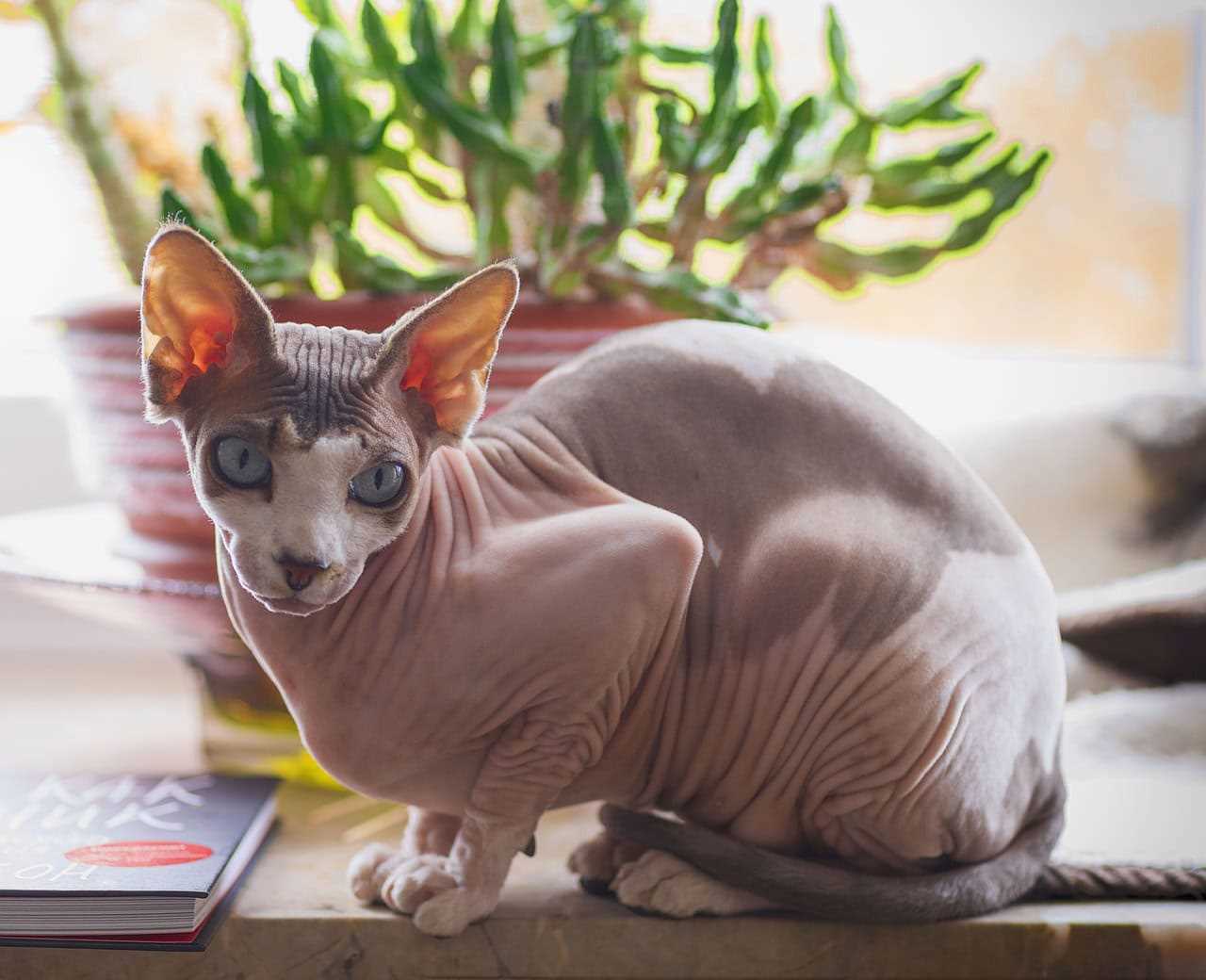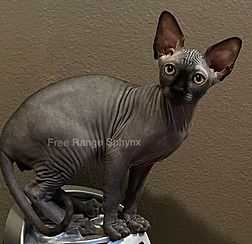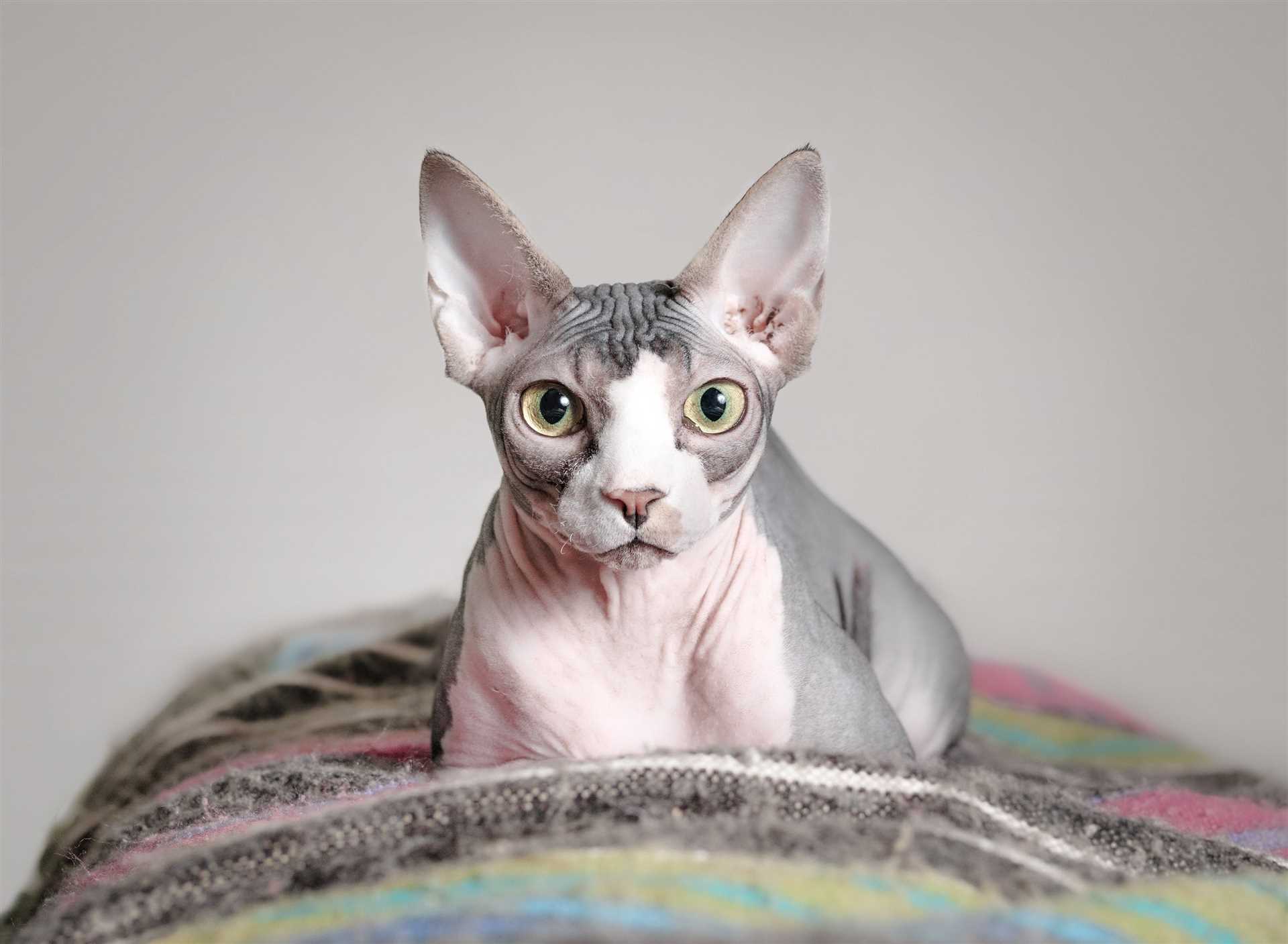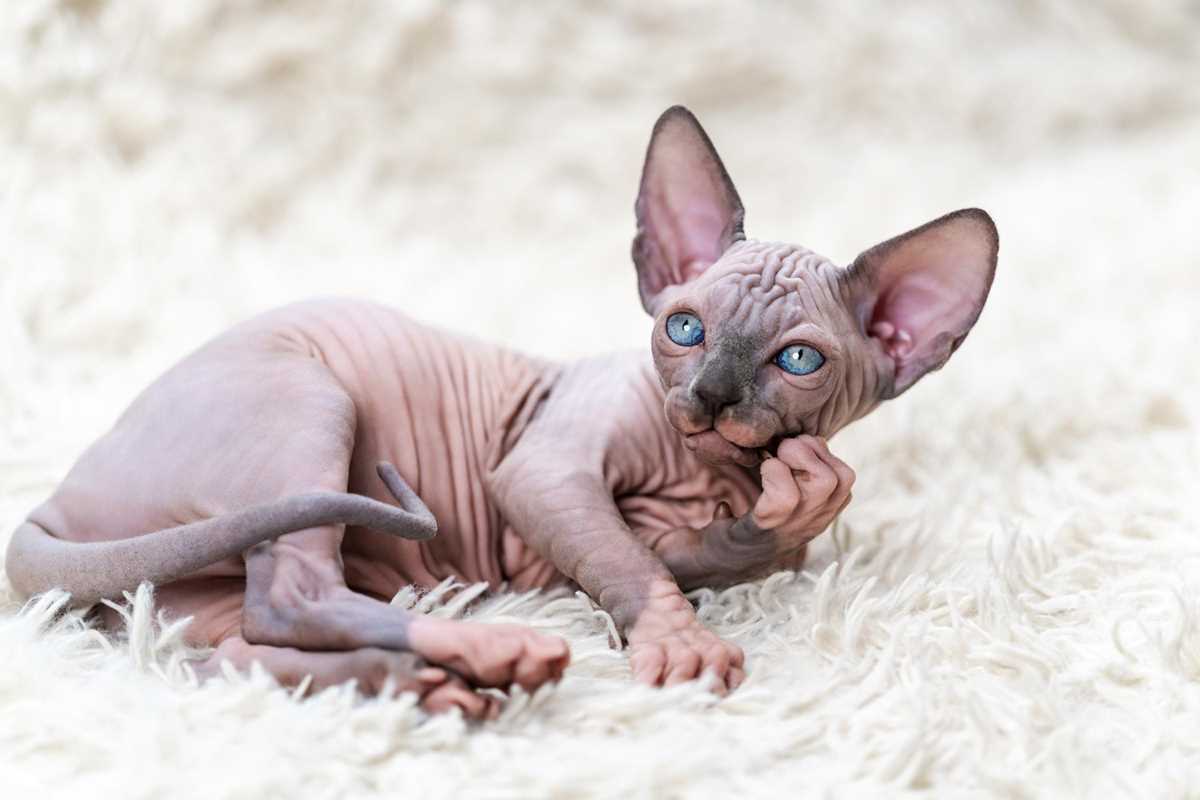



Before you decide to bring home a Sphynx feline, understand that the initial price tag typically ranges from $1,500 to $3,000. This expense can vary significantly based on factors such as the breeder’s reputation, the cat’s lineage, and any unique traits or markings.
Beyond the purchase expense, ongoing costs must be considered. Regular veterinary visits are essential, averaging around $300 annually, which includes vaccinations and health check-ups. Additionally, special grooming supplies to care for their unique skin require budgeting around $100 each year.
Nutrition also plays a significant role in your budget. Premium quality food, tailored to the dietary needs of these creatures, can cost between $50 to $100 monthly. Overall, anticipate a yearly expenditure close to $2,000 when factoring in health, grooming, and diet. A financial commitment that is as considerable as it is rewarding!
Price of a Sphynx Companion
If you’re considering adding a Sphynx to your family, expect to invest between $1,500 and $3,000 for a kitten from a reputable breeder. Prices can vary based on lineage, breeder reputation, and geographical location.
Beyond the initial purchase, prepare for ongoing financial commitments. Routine veterinary care, including vaccinations, check-ups, and spaying/neutering, can total around $300 to $500 annually. Don’t forget about food and supplies, which add another $500 to $800 each year.
Occasional grooming is essential, although these felines lack fur. Budget for special wipes and cleaning solutions, which usually cost around $50 to $100 yearly. Additionally, consider pet insurance to help mitigate unexpected medical expenses, costing between $20 and $50 monthly.
Finally, it’s wise to account for potential costs related to specialty food or treatments, especially if your new friend has specific health requirements. Being prepared for these expenses ensures a happy and healthy life for your new companion.
Initial Purchase Price of Hairless Cats
The entry cost for a sleek feline companion typically ranges from $1,500 to $3,000, depending on factors like breeder reputation, lineage, and location. I recommend researching various breeders to find the best match for your needs.
Factors Influencing Price

Several elements can impact the initial investment. Kittens from well-known breeders with championship bloodlines may be at the higher end of the spectrum. Additionally, geographical location plays a role; prices in urban areas often exceed those in rural settings. It’s wise to consider adoption options as well, which may offer lower costs.
Additional Considerations
Don’t forget about potential extra expenses. Initial vaccinations, spaying or neutering, and basic supplies can add up quickly. Budgeting for these necessities ensures a smooth transition into your household. Always ask breeders about health guarantees and any ongoing care recommendations to avoid unexpected costs down the line.
Ongoing Care Costs for Hairless Cats
Regular monthly expenses for my unique breed can accumulate quickly. Budgeting around $100 to $200 each month is a solid plan to cover essentials. This includes food, litter, and routine veterinary care.
Nutrition and Diet
Quality food is crucial. I recommend high-protein, grain-free options that can range from $30 to $70 monthly. Feeding a balanced diet helps maintain health and energy levels.
Grooming and Skin Care

Unlike furry friends, I require special attention to my skin. Monthly bathing with appropriate products and daily moisturizing can add up to $20 to $50 each month. Regular grooming helps prevent skin issues and keeps me comfortable.
Routine veterinary visits, including vaccinations and check-ups, should be budgeted for as well. Expect to set aside $50 to $100 annually for these services. Remember, investing in health care pays off in long-term well-being.
Be prepared for potential extra costs related to skin conditions, as they can arise. Setting aside an emergency fund of $200 to $500 is wise to cover unexpected veterinary needs.
Factors Influencing Hairless Kitty Prices
Several elements impact the pricing of these unique companions. Understanding these factors can guide potential owners in making informed decisions.
Breeder Reputation

Reputable breeders often charge more due to their commitment to responsible breeding practices. They prioritize health checks, genetic testing, and socialization of their kittens. Always research and choose a breeder with positive reviews and a clean record.
Lineage and Pedigree
The lineage of a feline plays a significant role in its cost. Kittens with champion bloodlines or notable ancestry will typically command higher prices. If you are interested in showing your pet, investing in a well-bred kitten can be worthwhile.
Geographical Location
Prices fluctuate based on location. Urban areas with higher living costs may have pricier options, while rural regions might offer more affordable choices. It’s beneficial to compare prices in different areas.
Health Guarantees and Contracts
Some breeders provide health guarantees, which can affect the initial price. A warranty can add value, ensuring that any genetic issues will be addressed. This peace of mind is worth considering when evaluating costs.
Color and Markings
Certain colors and patterns may be more desirable, leading to increased prices. Rare shades or unique markings can attract higher bids from enthusiasts, making them a factor in overall pricing.
Market Demand

Popularity influences pricing as well. If a particular breed becomes trendy, prices may rise due to increased demand. Staying informed about current trends can help you make a more strategic purchase.
Maintaining a hairless friend involves ongoing care and attention. For those curious about shedding issues, check this link: why my cat sheds so much.
Comparing Hairless Cats with Other Breeds
When considering the unique traits of a hair-free feline, it’s essential to examine how they stack up against other breeds. The distinct lack of fur can lead to different care requirements and temperament comparisons.
For example, unlike Persian cats, which require regular grooming to manage their long fur, my hairless friends often need different skin care routines. They are more prone to skin issues due to their lack of insulation, meaning regular baths and moisturizing are crucial. This can add to the overall maintenance costs.
In terms of personality, many who own both hairless breeds and fluffy companions notice that the former tend to be more affectionate and social. They thrive on human interaction, often following their owners around the house. In contrast, breeds like the British Shorthair may exhibit a more independent nature, preferring their own space.
| Breed | Grooming Needs | Temperament |
|---|---|---|
| Hairless | Regular baths, skin care | Affectionate, social |
| Persian | Daily brushing | Calm, reserved |
| British Shorthair | Minimal grooming | Independent, laid-back |
Diet is another factor. While many breeds can thrive on standard cat food, some hairless varieties may require specific dietary adjustments to support their skin health. If you’re curious about what other foods might be suitable, check out this article on whether can cats eat lettuce raw.
In summary, owning a hairless feline is not just about the initial price tag. The ongoing care, personality traits, and grooming needs set them apart from their furry counterparts, making it essential to consider these aspects before bringing one into your home.
Video:
Before you decide to bring home a Sphynx feline, understand that the initial price tag typically ranges from $1,500 to $3,000. This expense can vary significantly based on factors such as the breeder’s reputation, the cat’s lineage, and any unique traits or markings.
Beyond the purchase expense, ongoing costs must be considered. Regular veterinary visits are essential, averaging around $300 annually, which includes vaccinations and health check-ups. Additionally, special grooming supplies to care for their unique skin require budgeting around $100 each year.
Nutrition also plays a significant role in your budget. Premium quality food, tailored to the dietary needs of these creatures, can cost between $50 to $100 monthly. Overall, anticipate a yearly expenditure close to $2,000 when factoring in health, grooming, and diet. A financial commitment that is as considerable as it is rewarding!
Price of a Sphynx Companion
If you’re considering adding a Sphynx to your family, expect to invest between $1,500 and $3,000 for a kitten from a reputable breeder. Prices can vary based on lineage, breeder reputation, and geographical location.
Beyond the initial purchase, prepare for ongoing financial commitments. Routine veterinary care, including vaccinations, check-ups, and spaying/neutering, can total around $300 to $500 annually. Don’t forget about food and supplies, which add another $500 to $800 each year.
Occasional grooming is essential, although these felines lack fur. Budget for special wipes and cleaning solutions, which usually cost around $50 to $100 yearly. Additionally, consider pet insurance to help mitigate unexpected medical expenses, costing between $20 and $50 monthly.
Finally, it’s wise to account for potential costs related to specialty food or treatments, especially if your new friend has specific health requirements. Being prepared for these expenses ensures a happy and healthy life for your new companion.
Initial Purchase Price of Hairless Cats
The entry cost for a sleek feline companion typically ranges from $1,500 to $3,000, depending on factors like breeder reputation, lineage, and location. I recommend researching various breeders to find the best match for your needs.
Factors Influencing Price

Several elements can impact the initial investment. Kittens from well-known breeders with championship bloodlines may be at the higher end of the spectrum. Additionally, geographical location plays a role; prices in urban areas often exceed those in rural settings. It’s wise to consider adoption options as well, which may offer lower costs.
Additional Considerations
Don’t forget about potential extra expenses. Initial vaccinations, spaying or neutering, and basic supplies can add up quickly. Budgeting for these necessities ensures a smooth transition into your household. Always ask breeders about health guarantees and any ongoing care recommendations to avoid unexpected costs down the line.
Ongoing Care Costs for Hairless Cats
Regular monthly expenses for my unique breed can accumulate quickly. Budgeting around $100 to $200 each month is a solid plan to cover essentials. This includes food, litter, and routine veterinary care.
Nutrition and Diet
Quality food is crucial. I recommend high-protein, grain-free options that can range from $30 to $70 monthly. Feeding a balanced diet helps maintain health and energy levels.
Grooming and Skin Care

Unlike furry friends, I require special attention to my skin. Monthly bathing with appropriate products and daily moisturizing can add up to $20 to $50 each month. Regular grooming helps prevent skin issues and keeps me comfortable.
Routine veterinary visits, including vaccinations and check-ups, should be budgeted for as well. Expect to set aside $50 to $100 annually for these services. Remember, investing in health care pays off in long-term well-being.
Be prepared for potential extra costs related to skin conditions, as they can arise. Setting aside an emergency fund of $200 to $500 is wise to cover unexpected veterinary needs.
Factors Influencing Hairless Kitty Prices
Several elements impact the pricing of these unique companions. Understanding these factors can guide potential owners in making informed decisions.
Breeder Reputation

Reputable breeders often charge more due to their commitment to responsible breeding practices. They prioritize health checks, genetic testing, and socialization of their kittens. Always research and choose a breeder with positive reviews and a clean record.
Lineage and Pedigree
The lineage of a feline plays a significant role in its cost. Kittens with champion bloodlines or notable ancestry will typically command higher prices. If you are interested in showing your pet, investing in a well-bred kitten can be worthwhile.
Geographical Location
Prices fluctuate based on location. Urban areas with higher living costs may have pricier options, while rural regions might offer more affordable choices. It’s beneficial to compare prices in different areas.
Health Guarantees and Contracts
Some breeders provide health guarantees, which can affect the initial price. A warranty can add value, ensuring that any genetic issues will be addressed. This peace of mind is worth considering when evaluating costs.
Color and Markings
Certain colors and patterns may be more desirable, leading to increased prices. Rare shades or unique markings can attract higher bids from enthusiasts, making them a factor in overall pricing.
Market Demand

Popularity influences pricing as well. If a particular breed becomes trendy, prices may rise due to increased demand. Staying informed about current trends can help you make a more strategic purchase.
Maintaining a hairless friend involves ongoing care and attention. For those curious about shedding issues, check this link: why my cat sheds so much.
Comparing Hairless Cats with Other Breeds
When considering the unique traits of a hair-free feline, it’s essential to examine how they stack up against other breeds. The distinct lack of fur can lead to different care requirements and temperament comparisons.
For example, unlike Persian cats, which require regular grooming to manage their long fur, my hairless friends often need different skin care routines. They are more prone to skin issues due to their lack of insulation, meaning regular baths and moisturizing are crucial. This can add to the overall maintenance costs.
In terms of personality, many who own both hairless breeds and fluffy companions notice that the former tend to be more affectionate and social. They thrive on human interaction, often following their owners around the house. In contrast, breeds like the British Shorthair may exhibit a more independent nature, preferring their own space.
| Breed | Grooming Needs | Temperament |
|---|---|---|
| Hairless | Regular baths, skin care | Affectionate, social |
| Persian | Daily brushing | Calm, reserved |
| British Shorthair | Minimal grooming | Independent, laid-back |
Diet is another factor. While many breeds can thrive on standard cat food, some hairless varieties may require specific dietary adjustments to support their skin health. If you’re curious about what other foods might be suitable, check out this article on whether can cats eat lettuce raw.
In summary, owning a hairless feline is not just about the initial price tag. The ongoing care, personality traits, and grooming needs set them apart from their furry counterparts, making it essential to consider these aspects before bringing one into your home.
Video:
Before you decide to bring home a Sphynx feline, understand that the initial price tag typically ranges from $1,500 to $3,000. This expense can vary significantly based on factors such as the breeder’s reputation, the cat’s lineage, and any unique traits or markings.
Beyond the purchase expense, ongoing costs must be considered. Regular veterinary visits are essential, averaging around $300 annually, which includes vaccinations and health check-ups. Additionally, special grooming supplies to care for their unique skin require budgeting around $100 each year.
Nutrition also plays a significant role in your budget. Premium quality food, tailored to the dietary needs of these creatures, can cost between $50 to $100 monthly. Overall, anticipate a yearly expenditure close to $2,000 when factoring in health, grooming, and diet. A financial commitment that is as considerable as it is rewarding!
Price of a Sphynx Companion
If you’re considering adding a Sphynx to your family, expect to invest between $1,500 and $3,000 for a kitten from a reputable breeder. Prices can vary based on lineage, breeder reputation, and geographical location.
Beyond the initial purchase, prepare for ongoing financial commitments. Routine veterinary care, including vaccinations, check-ups, and spaying/neutering, can total around $300 to $500 annually. Don’t forget about food and supplies, which add another $500 to $800 each year.
Occasional grooming is essential, although these felines lack fur. Budget for special wipes and cleaning solutions, which usually cost around $50 to $100 yearly. Additionally, consider pet insurance to help mitigate unexpected medical expenses, costing between $20 and $50 monthly.
Finally, it’s wise to account for potential costs related to specialty food or treatments, especially if your new friend has specific health requirements. Being prepared for these expenses ensures a happy and healthy life for your new companion.
Initial Purchase Price of Hairless Cats
The entry cost for a sleek feline companion typically ranges from $1,500 to $3,000, depending on factors like breeder reputation, lineage, and location. I recommend researching various breeders to find the best match for your needs.
Factors Influencing Price

Several elements can impact the initial investment. Kittens from well-known breeders with championship bloodlines may be at the higher end of the spectrum. Additionally, geographical location plays a role; prices in urban areas often exceed those in rural settings. It’s wise to consider adoption options as well, which may offer lower costs.
Additional Considerations
Don’t forget about potential extra expenses. Initial vaccinations, spaying or neutering, and basic supplies can add up quickly. Budgeting for these necessities ensures a smooth transition into your household. Always ask breeders about health guarantees and any ongoing care recommendations to avoid unexpected costs down the line.
Ongoing Care Costs for Hairless Cats
Regular monthly expenses for my unique breed can accumulate quickly. Budgeting around $100 to $200 each month is a solid plan to cover essentials. This includes food, litter, and routine veterinary care.
Nutrition and Diet
Quality food is crucial. I recommend high-protein, grain-free options that can range from $30 to $70 monthly. Feeding a balanced diet helps maintain health and energy levels.
Grooming and Skin Care

Unlike furry friends, I require special attention to my skin. Monthly bathing with appropriate products and daily moisturizing can add up to $20 to $50 each month. Regular grooming helps prevent skin issues and keeps me comfortable.
Routine veterinary visits, including vaccinations and check-ups, should be budgeted for as well. Expect to set aside $50 to $100 annually for these services. Remember, investing in health care pays off in long-term well-being.
Be prepared for potential extra costs related to skin conditions, as they can arise. Setting aside an emergency fund of $200 to $500 is wise to cover unexpected veterinary needs.
Factors Influencing Hairless Kitty Prices
Several elements impact the pricing of these unique companions. Understanding these factors can guide potential owners in making informed decisions.
Breeder Reputation

Reputable breeders often charge more due to their commitment to responsible breeding practices. They prioritize health checks, genetic testing, and socialization of their kittens. Always research and choose a breeder with positive reviews and a clean record.
Lineage and Pedigree
The lineage of a feline plays a significant role in its cost. Kittens with champion bloodlines or notable ancestry will typically command higher prices. If you are interested in showing your pet, investing in a well-bred kitten can be worthwhile.
Geographical Location
Prices fluctuate based on location. Urban areas with higher living costs may have pricier options, while rural regions might offer more affordable choices. It’s beneficial to compare prices in different areas.
Health Guarantees and Contracts
Some breeders provide health guarantees, which can affect the initial price. A warranty can add value, ensuring that any genetic issues will be addressed. This peace of mind is worth considering when evaluating costs.
Color and Markings
Certain colors and patterns may be more desirable, leading to increased prices. Rare shades or unique markings can attract higher bids from enthusiasts, making them a factor in overall pricing.
Market Demand

Popularity influences pricing as well. If a particular breed becomes trendy, prices may rise due to increased demand. Staying informed about current trends can help you make a more strategic purchase.
Maintaining a hairless friend involves ongoing care and attention. For those curious about shedding issues, check this link: why my cat sheds so much.
Comparing Hairless Cats with Other Breeds
When considering the unique traits of a hair-free feline, it’s essential to examine how they stack up against other breeds. The distinct lack of fur can lead to different care requirements and temperament comparisons.
For example, unlike Persian cats, which require regular grooming to manage their long fur, my hairless friends often need different skin care routines. They are more prone to skin issues due to their lack of insulation, meaning regular baths and moisturizing are crucial. This can add to the overall maintenance costs.
In terms of personality, many who own both hairless breeds and fluffy companions notice that the former tend to be more affectionate and social. They thrive on human interaction, often following their owners around the house. In contrast, breeds like the British Shorthair may exhibit a more independent nature, preferring their own space.
| Breed | Grooming Needs | Temperament |
|---|---|---|
| Hairless | Regular baths, skin care | Affectionate, social |
| Persian | Daily brushing | Calm, reserved |
| British Shorthair | Minimal grooming | Independent, laid-back |
Diet is another factor. While many breeds can thrive on standard cat food, some hairless varieties may require specific dietary adjustments to support their skin health. If you’re curious about what other foods might be suitable, check out this article on whether can cats eat lettuce raw.
In summary, owning a hairless feline is not just about the initial price tag. The ongoing care, personality traits, and grooming needs set them apart from their furry counterparts, making it essential to consider these aspects before bringing one into your home.









